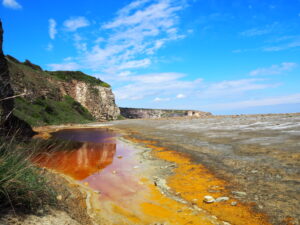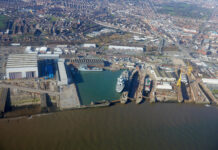Research regarding coastal waste has found that more than 3,000 coastal locations in north west England – including Crosby Beach – and North Wales are at risk of pollution from legacy landfill sites due to the change in climate.

The investigations and research were co-authored by hydrologists at Liverpool John Moores University, Dr Patrick Byrne, reader in Hydrology and Environment Pollution, and Dr Alissia Nannoni, a visiting researcher at LJMU’s School of Biological and Environmental Sciences.
The investigation was part of a national project called Legacy Wastes in the coastal zone and is funded by the £1.8m UK-based project, Natural Environment Research Council. The overall aim of the project is to understand the risks of pollution from legacy wastes in coastal zones, specifically with regards to climate change impacts.
Dr Byrne told MerseyNewsLive: “We found 30,000 of these legacy waste sites in the UK. These are sites where wastes have been dumped in the past. These could be municipal waste, landfill household waste. Also, a variety of industrial waste which is from all mining, steel manufacturer, from the processing of metal ores like arsenic, lead, or zinc.”
They are hoping that the government will look at this research and use their findings to help prioritise what very limited funding is available to the highest risk sites in order to resolve this issue.
However, if this issue is not given the attention it needs, it is likely that sea levels will rise and water will interact with these components, including arsenic, lead, and zinc, and transfer them from the location of waste, into the wider environment where they can move around and accumulate in ecosystems.

Dr Byrne added: “The primary risk is that inundation of these wastes with seawater, because of the worsening climate, might lead to erosion of the wastes or leaching of harmful contaminants. These contaminants could then potentially accumulate in estuarine and coastal environments that are important ecosystems and habitats for birds and mammals.”
The research paper, Frontiers in Environmental Science, found that of the 30,318 legacy waste deposits identified in England and Wales, 3,384 were identified within coastal zones, of which 711 are listed as priority sites as they currently have no flood defence or sea level rise protection.
Although the largest factors to this crisis come from carbon emission and from big organisations, the public are also being urged to help minimise the increasing pollution levels.
Dr Bryne said: “The biggest thing we can do is use less. We have a lot of single use items which we use one and throw away, and that is doing the environment no good.
“Use less and do not feel that we need to change our phones every year and then change our cars every couple of years but use these things a bit more, and by doing so, emit less carbon and introduce less contaminates into the world.”
Watch Rachel Cowan’s video report:
Feature image by Dr Patrick Byrne












